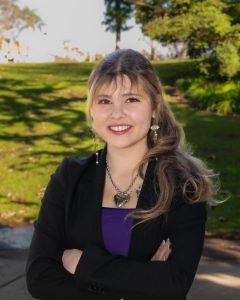My name is Lehi Mohammad Naseem.
I am from Kurdistan, Northern Iraq and I am a Muslim woman. I do not wear a scarf, but I still believe in Allah, which is directly translated as God. I don’t believe everyone around me should have the same beliefs as I do and my faith certainly doesn’t work to oppress me.
I was born in the Middle East, and my family still lives in Kurdistan. So I’ve learned to brush off the generalizations publicized by the media. However, I have recently learned not everyone realizes these crazy stories are almost always only generalizations and not facts. Don’t get me wrong, there are several issues paralyzing parts of the region, but the Middle East is more than what the headlines tell you.
The media has consistently portrayed the Middle East as a benighted and frightening region. I realize it’s not personal; it’s just a matter of media gate keeping. If they reported on how guerrilla forces, such as the Peshmerga, were fighting to stop the extremist violence in certain parts of the Middle East, no one would pay attention. Reading about the beheading of a Syrian man in the streets just has more of a shock value. I’m fully aware that certain stories concerning development in the Middle East have been filtered out and replaced with rare gruesome stories just for the purpose of viewership. However, the entire region should not be judged based on the sins of a few extremists.
First and foremost, Islam, the predominant religion in the Middle East, does not promote oppression of women. Every Muslim woman is not obligated to wear a veil and women who do have their own reasons for doing so. UC San Diego junior Zahra Alasady has been wearing a veil since she was nine. She explained her personal reasons for covering up.
“You wear a hijab to hide your beauty,” said Alasady, expressing how a woman should “keep the beauty just for (her) husband.”
The veil exemplifies modesty and honor a woman feels for herself and her family.
However that does not mean the women who do not wear a veil don’t embody the same dignifying characteristics. Contrary to popular belief, all women are valued and respected in most parts of the Middle East. Turkey was one of the first countries to grant women the right to vote in 1934. There is still more progress to be achieved but equality for women is an incessant global issue, not just a Middle Eastern one.
Second, there is a difference between Islamist extremists and the rest of the Islamic community. Western and European societies are only exposed to the malicious Muslims who manipulate religion to promote violence and spread animosity. Fortunately, this widely publicized faction is only a small portion of the billion Muslims in the world. Islam is a peaceful religion not much different than Christianity or Judaism. Associating every Muslim with the popularized extremists is like associating every Christian with the Westboro Baptist Church. Every Christian is not a homophobic anti-Semitic, just as every Muslim is not a terrorist.
Despite widespread belief, everyone in the Middle East is not Muslim. And “Middle Eastern” is not synonymous with “Arab.” Lebanon is the perfect example of a melting pot where a majority of Christians and Muslims have learned to live peacefully with one another. Israel has a predominantly Jewish population. And aside from the existence of the Abrahamic faiths within the Middle East, there are populations of Yezidis, Zoroastrians and many other minority religions within the area. There are also several various ethnic groups, who are not descendants of Arabs, spread throughout the region.
Thirdly, the economic issues and achievements of the Middle East don’t only relate to access and exportation of oil. Many people believe the entire population is either mostly poor or overwhelmingly wealthy. When in reality, their wealth distribution is quite similar to America’s. The middle-class population is considerably larger than the upper- and the lower-class populations. Only a handful of the wealthy actually work directly with the oil business. And for the most part, the benefits have been utilized to urbanize the region. Cities such as Dubai, Cairo and Istanbul continue to attract tourists from around the world.
Generalizations, prejudices and stereotypes exist everywhere and they will continue to exist until people are willing to learn the actual truth rather than fixate on their personal perceived truths.
We all have our own image of what someone is supposed to act or look like, but in order to truly understand one another we must stop assuming and start asking questions. The Middle East began as an enigma for the West, and then somehow turned into the epitome of terrorism. But there’s more to the region than just the violence and the religious tensions. The Middle East is beaming with culture, intelligence and development but it will only continue to be crippled by affliction if it is expected to do so.









